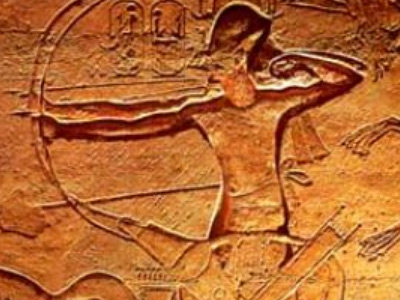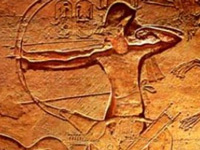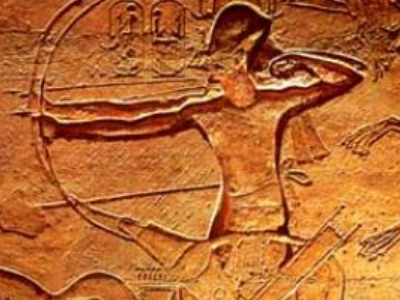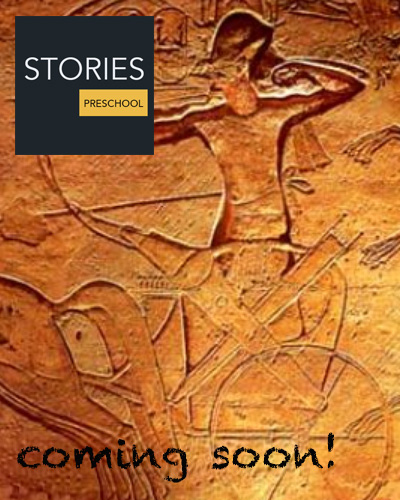Battle of Kadesh (1274 BC)

The Battle of Kadesh or Battle of Qadesh took place between the forces of the Egyptian Empire under Ramesses II and the Hittite Empire under Muwatalli II at the city of Kadesh on the Orontes River, just upstream of Lake Homs near the modern Syrian-Lebanese border.
The battle is generally dated to 1274 BC in the conventional Egyptian chronology, and is the earliest battle in recorded history for which details of tactics and formations are known. It is believed to have been the largest chariot battle ever fought, involving between 5,000 and 6,000 chariots in total.
As a result of the multiple Kadesh inscriptions, it is the best documented battle in all of ancient history.
Background
After expelling the Hyksos 15th Dynasty around 1550 BC, the native Egyptian New Kingdom rulers became more aggressive in reclaiming control of their state's borders. Thutmose I, Thutmose III and his son and coregent Amenhotep II fought battles from Megiddo north to the Orontes River, including conflict with Kadesh.
Many of the Egyptian campaign accounts between c. 1400 and 1300 BC reflect the general destabilization of the region of the Djahi (Southern Canaan). The reigns of Thutmose IV and Amenhotep III were undistinguished, except that Egypt continued to lose territory to Mitanni in northern Syria.
During the late Egyptian 18th dynasty, the Amarna Letters tell the story of the decline of Egyptian influence in the region. The Egyptians showed flagging interest here until almost the end of the dynasty. Horemheb (d 1292 BC), the last ruler of this dynasty, campaigned in this region, finally beginning to turn Egyptian interest back to this region.
This process continued in the 19th Dynasty. Like his father Ramesses I, Seti I was a military commander who set out to restore Egypt's empire to the days of the Tuthmosis kings almost a century before. Inscriptions on Karnak temple walls record the details of his campaigns into Canaan and Syria. He took 20,000 men and reoccupied abandoned Egyptian posts and garrisoned cities. He made an informal peace with the Hittites, took control of coastal areas along the Mediterranean, and continued to campaign in Canaan. A second campaign led to his capture of Kadesh (where a stela commemorated his victory) and Amurru. His son and heir Ramesses II campaigned with him. There are historical records that record a large weapons order by Ramesses II in the year before the expedition he led to Kadesh in his fifth regnal year.
However, at some point, both regions may have lapsed back into Hittite control. What exactly happened to Amurru is disputed. The Hittitologist Trevor Bryce suggests that, although it may have fallen once again under Hittite control, it is more likely Amurru remained a Hittite vassal state.
The immediate antecedents to the Battle of Kadesh were the early campaigns of Ramesses II into Canaan. In the fourth year of his reign, he marched north into Syria, either to recapture Amurru or, as a probing effort, to confirm his vassals' loyalty and explore the terrain of possible battles. The recovery of Amurru was Muwatalli's stated motivation for marching south to confront the Egyptians. Ramesses marched north in the fifth year of his reign and encountered the Hittites at Kadesh.
HISTORY

RESOURCES
This article uses material from the Wikipedia article "Battle of Kadesh (1274 BC)", which is released under the Creative Commons Attribution-Share-Alike License 3.0.
© Stories Preschool. All Rights Reserved.









